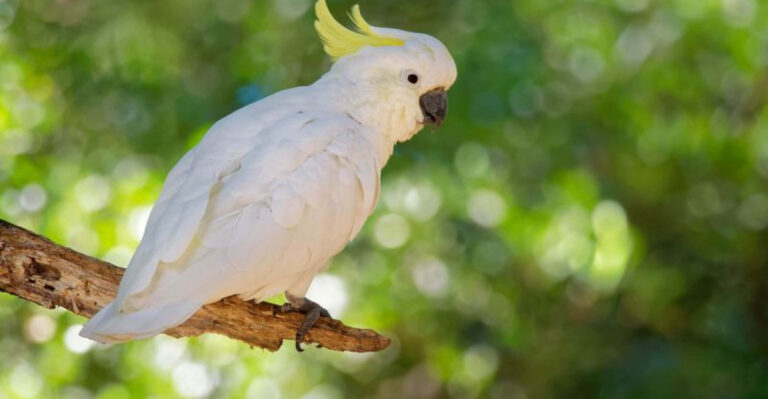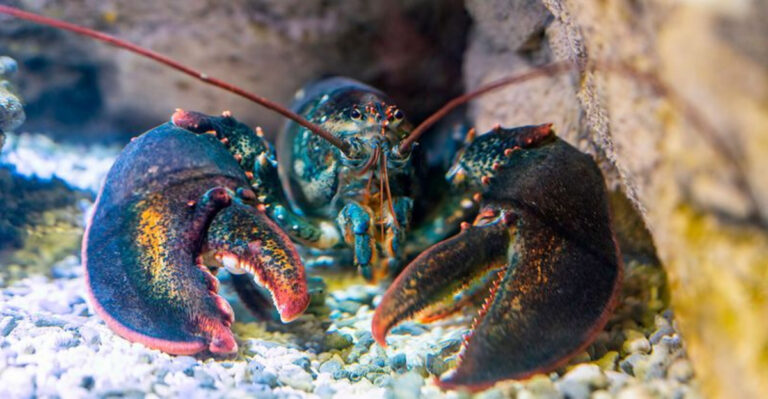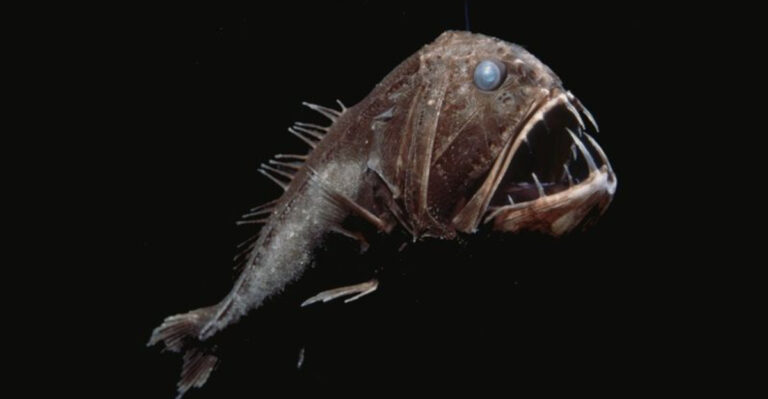Meet 16 Ocean Predators That Are Far More Dangerous Than Sharks
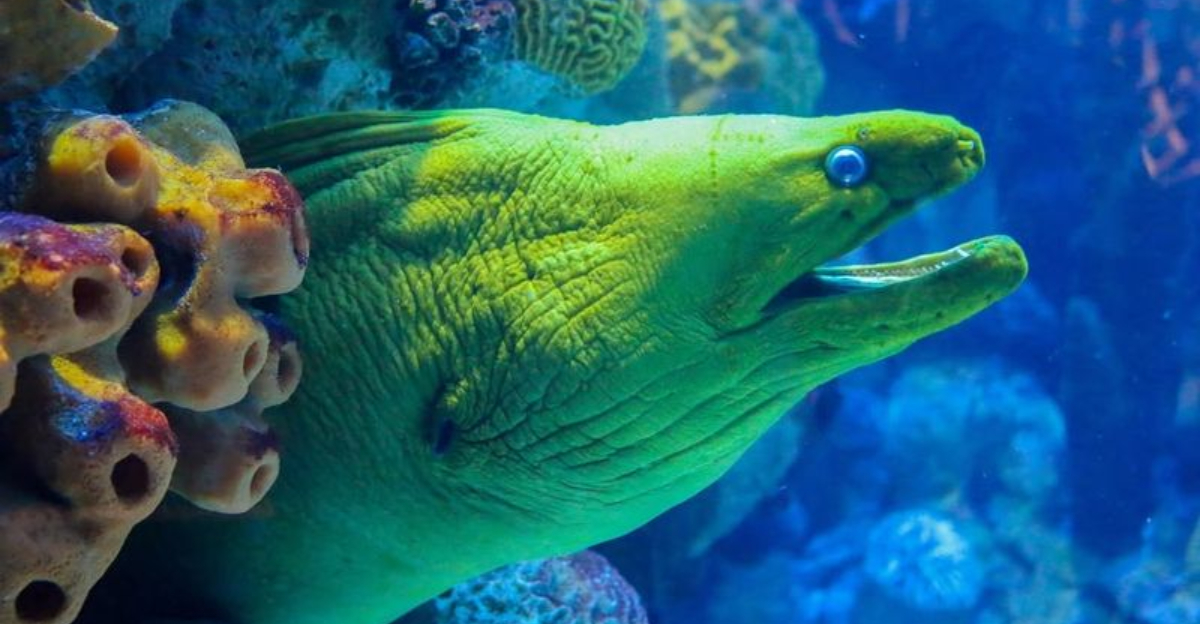
When it comes to ocean fear factors, sharks often steal the spotlight, but there are a myriad of other sea creatures with far more sinister reputations.
In this exploration, we introduce you to formidable ocean predators notorious for their lethal prowess.
1. Great Barracuda
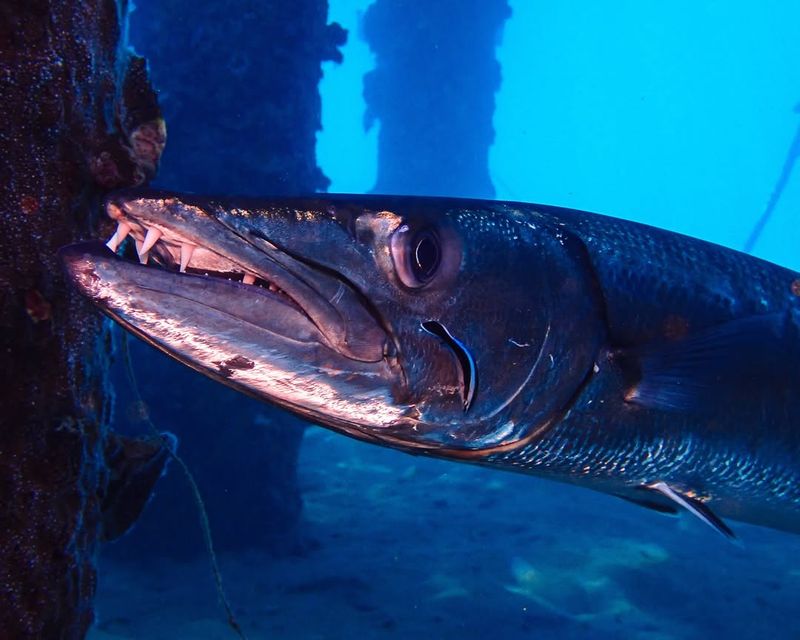
Sleek and streamlined, the great barracuda is a master of surprise attacks.
Known for its sudden bursts of speed, it can quickly cover ground when pursuing prey. Its razor-sharp teeth are no joke, capable of inflicting serious injury if provoked.
While its shiny, silver body might catch the eye, it’s best appreciated from afar. The great barracuda’s reputation as a fierce predator ensures that it commands respect in any watery territory it claims as its own.
2. Pufferfish
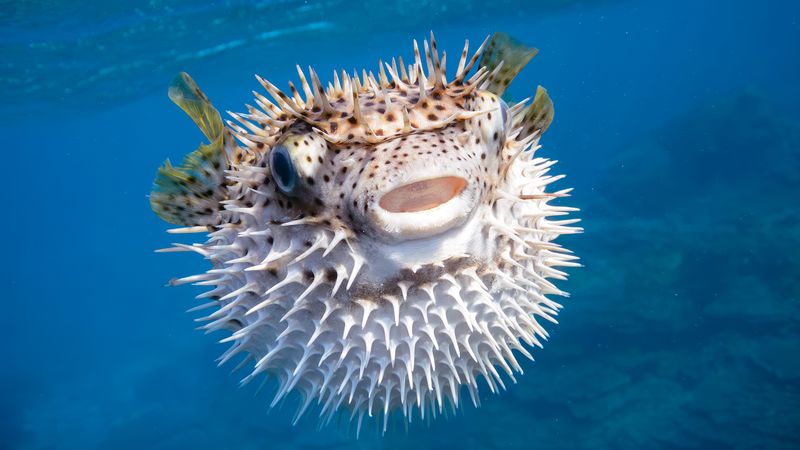
Don’t be fooled by the pufferfish’s cute and bubbly exterior. This seemingly benign creature harbors a potent neurotoxin called tetrodotoxin.
Just a small amount can cause paralysis and respiratory failure, and there’s no antidote! Their infamous poison is more than enough to deter predators.
This fish’s unique ability to inflate its body into a spiky ball is both a defensive strategy and a spectacle of nature’s creativity. Approach with caution, as this fish’s deadly secret is well-hidden behind its innocent eyes.
3. Saltwater Crocodile
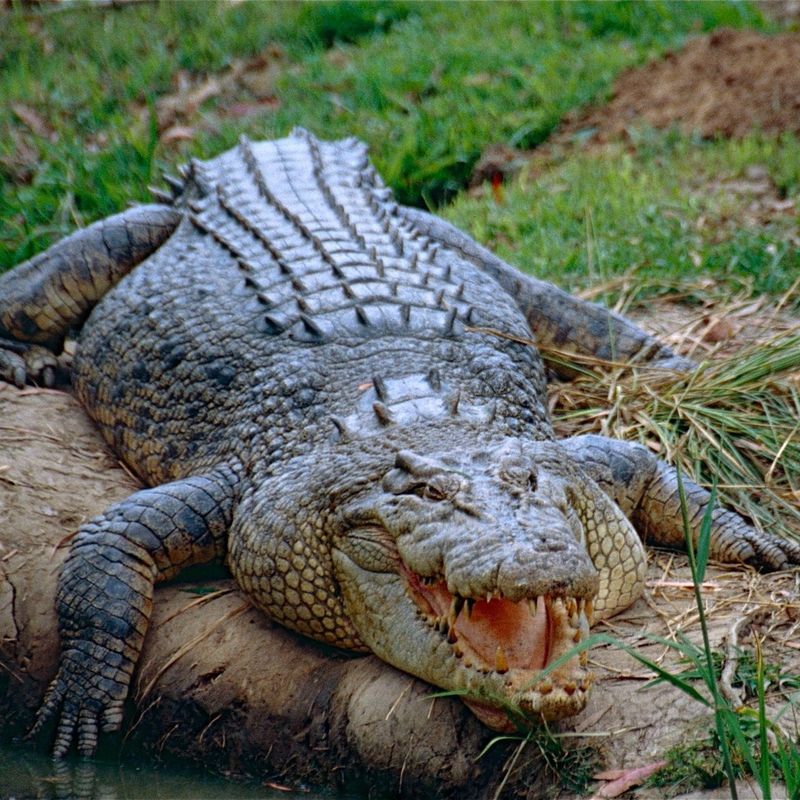
Silent and lethal, the saltwater crocodile is nature’s stealthy assassin. Armed with the strongest bite force of any living creature, it can crush bones with ease.
These reptiles lie in wait, lurking just beneath the surface before ambushing prey with explosive speed and precision.
Their territory ranges from the tropical rivers of Southeast Asia to the northern coasts of Australia.
They’ve earned their place at the top of the food chain, demanding both respect and a good safe distance from admirers.
4. Lionfish
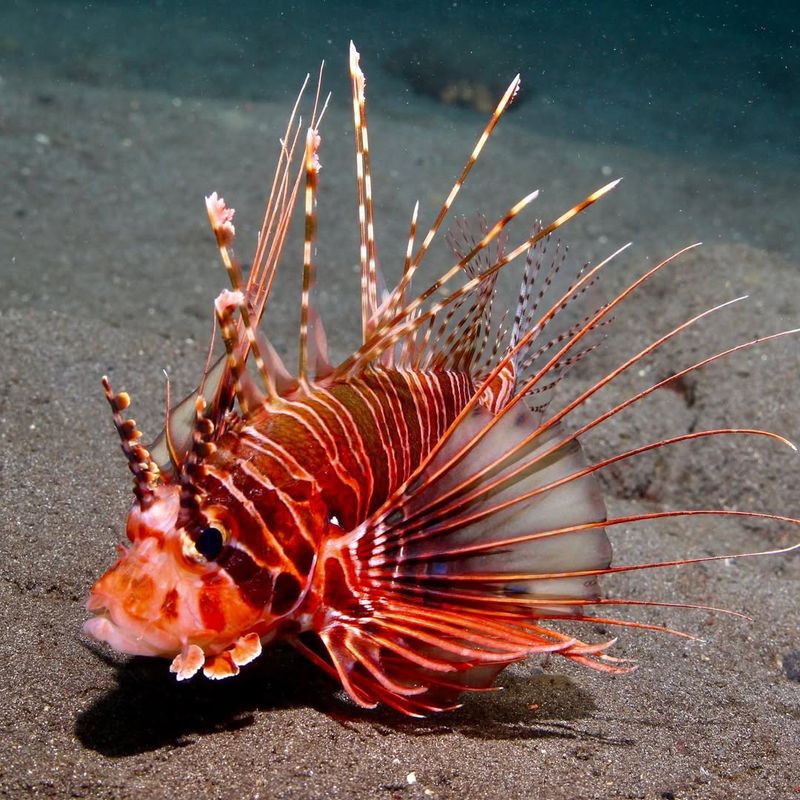
Elegance meets danger in the lionfish, a stunning spectacle of the ocean. With its ornate, zebra-like stripes and flowing fins, this fish lures you in for a closer look, but beware of its venom-filled spines.
A sting can result in severe pain and nausea, a price too high for an up-close encounter. This invasive species wreaks havoc on reef ecosystems, consuming vast amounts of small fish.
Their beauty, while captivating, serves as a reminder of their perilous nature.
5. Stonefish
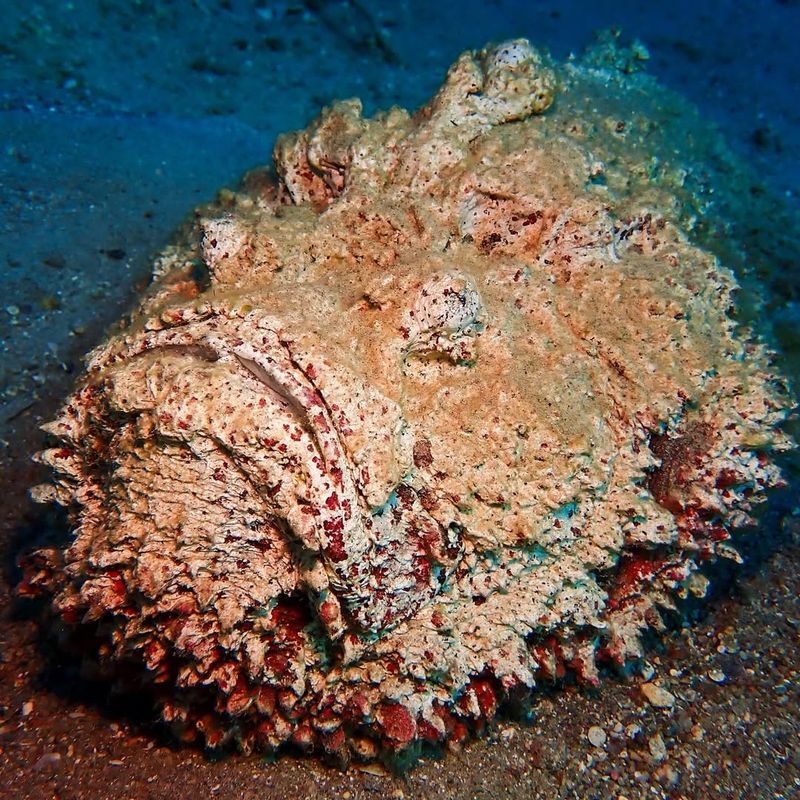
Masters of disguise, stonefish are the ocean’s ultimate stealth predators. With their rock-like appearance, they are almost impossible to spot on the sea floor.
This inconspicuous facade hides venomous spines that can deliver a sting leading to excruciating pain, tissue damage, and even heart failure.
Stepping on one is a diver’s worst nightmare. As nature’s perfect ambushers, they remind us that the ocean floor can be as dangerous as any stormy sea. It’s wise to tread carefully in their rocky domain.
6. Moray Eel
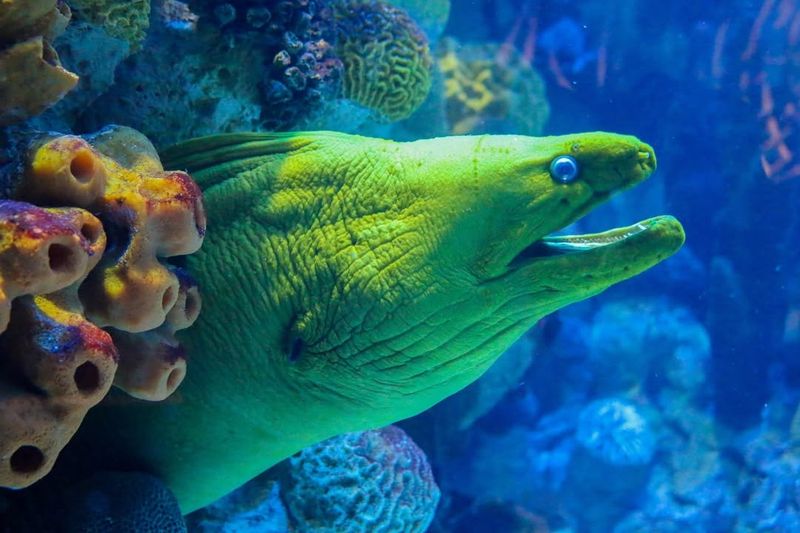
Lurking within coral crevices, the moray eel is a reclusive yet fearsome predator. With jaws that deliver powerful bites, it won’t hesitate to defend its territory.
Their bites often introduce harmful bacteria, leading to infections that can be slow to heal. Though not outwardly aggressive, they are quick to respond if provoked.
These serpentine creatures add a mysterious allure to the underwater world, their presence a testament to the ocean’s intricate web of life and survival.
7. Irukandji Jellyfish
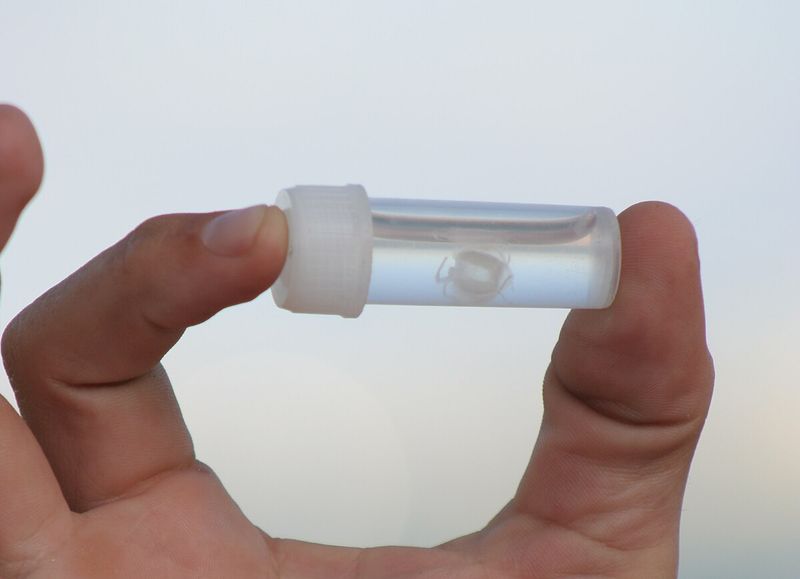
This minuscule menace, the Irukandji jellyfish, proves that size isn’t everything. Its diminutive form belies the severity of its sting, which can cause intense pain, muscle cramps, and even cardiac arrest.
Found in the waters off Northern Australia, these jellyfish might be small, but their impact is monumental. Their sting can send victims to the hospital, making them one of the ocean’s most dangerous inhabitants.
A swim in these waters is best undertaken with vigilance and respect for these hidden threats.
8. Electric Eel
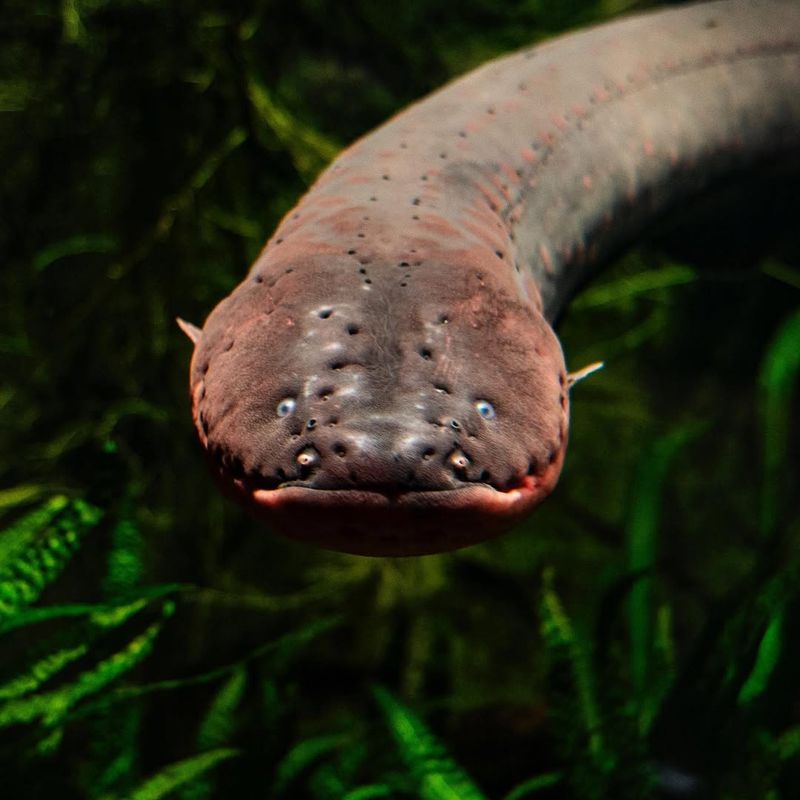
Generating electricity isn’t just for power plants; the electric eel has mastered this feat in the wild. Capable of producing shocks up to 600 volts, it can stun prey and deter predators with ease.
Found in the murky rivers of South America, these eels are both fascinating and formidable. Their ability to emit electric fields adds a shocking twist to their hunting strategies.
It’s a jolting experience for anyone who ventures too close without realizing the power these creatures hold.
9. Blue-Ringed Octopus
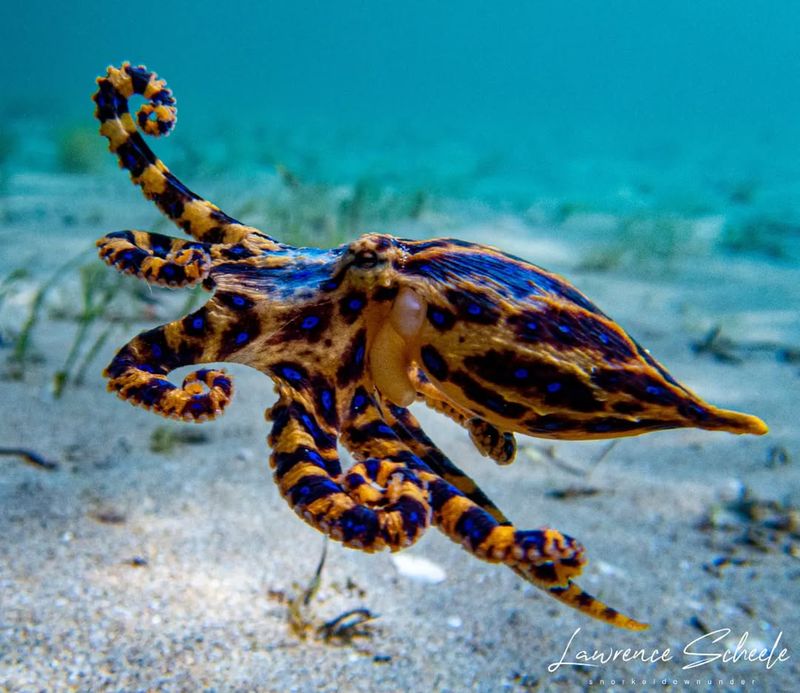
Small but mighty, the blue-ringed octopus carries enough venom to incapacitate a human. Its bite may be painless, but the effects are anything but.
It leads to paralysis and respiratory failure, with no known antidote. These colorful creatures flash their blue rings when threatened, a beautiful yet clear warning sign.
Found in tide pools and coral reefs in the Pacific and Indian Oceans, they are best admired from a safe distance. Handling them is a risk not worth taking.
10. Cone Snail
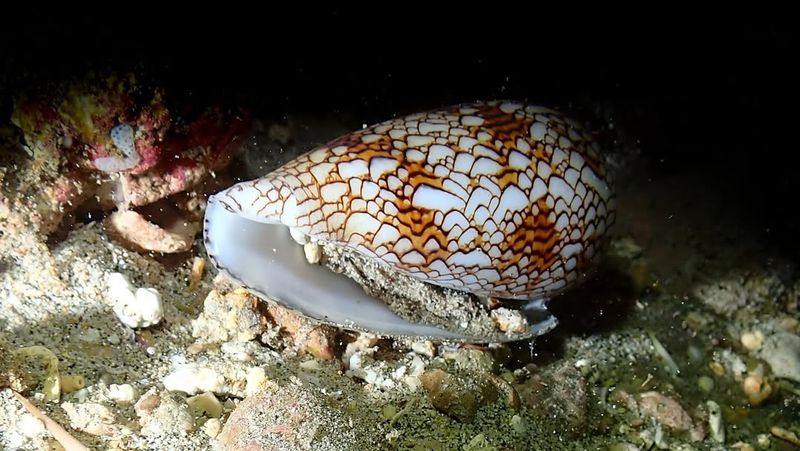
At a glance, the cone snail seems harmless, but it’s a wolf in snail’s clothing. This mollusk wields a harpoon-like tooth capable of delivering venom potent enough to cause paralysis and respiratory failure.
Their beautiful shells lure collectors, but the risk of handling them is substantial. Found in warm tropical waters, they are a stark reminder of the ocean’s hidden dangers.
Admire their beauty, but always remember the peril that lies beneath their enticing exteriors. A close encounter could be your last.
11. Portuguese Man O’ War
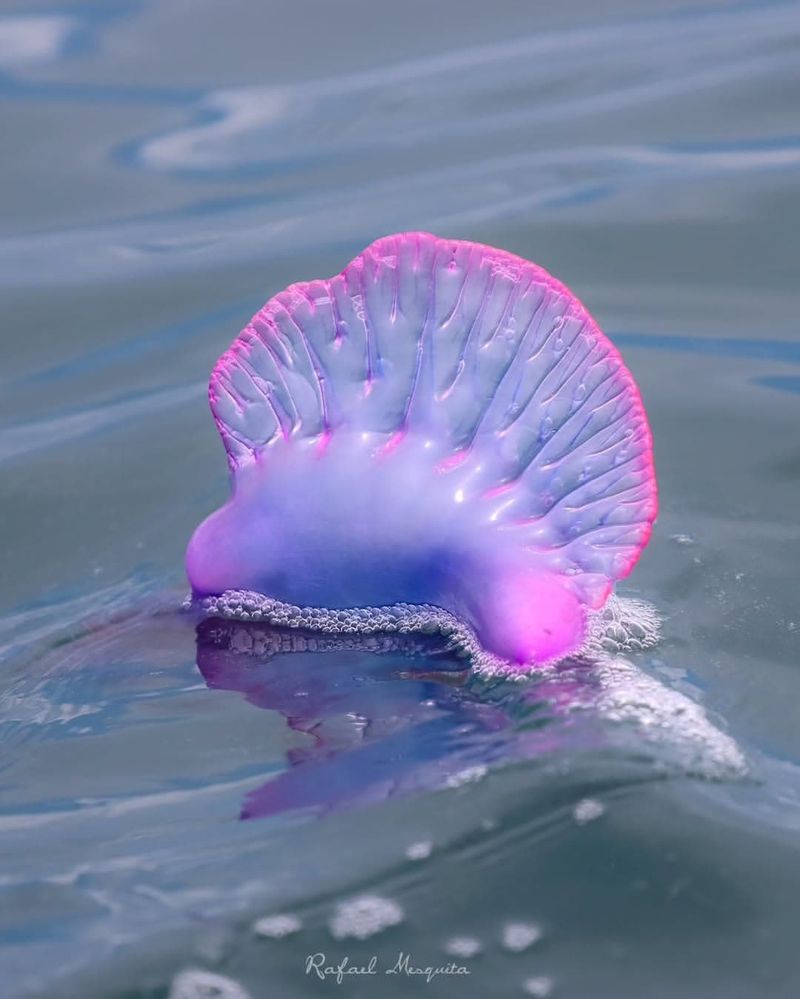
Not a true jellyfish, the Portuguese Man O’ War is a colony of polyps with venomous tentacles that can extend for meters. Their sting can cause burning pain, heart complications, and breathing difficulties.
They drift on the ocean’s surface, a deceptive beauty hiding a dangerous secret. Found in warm ocean waters worldwide, they teach an invaluable lesson about the ocean’s unpredictable nature.
Observing their delicate dance from a distance is both wise and fascinating, a dance best not joined.
12. Giant Squid
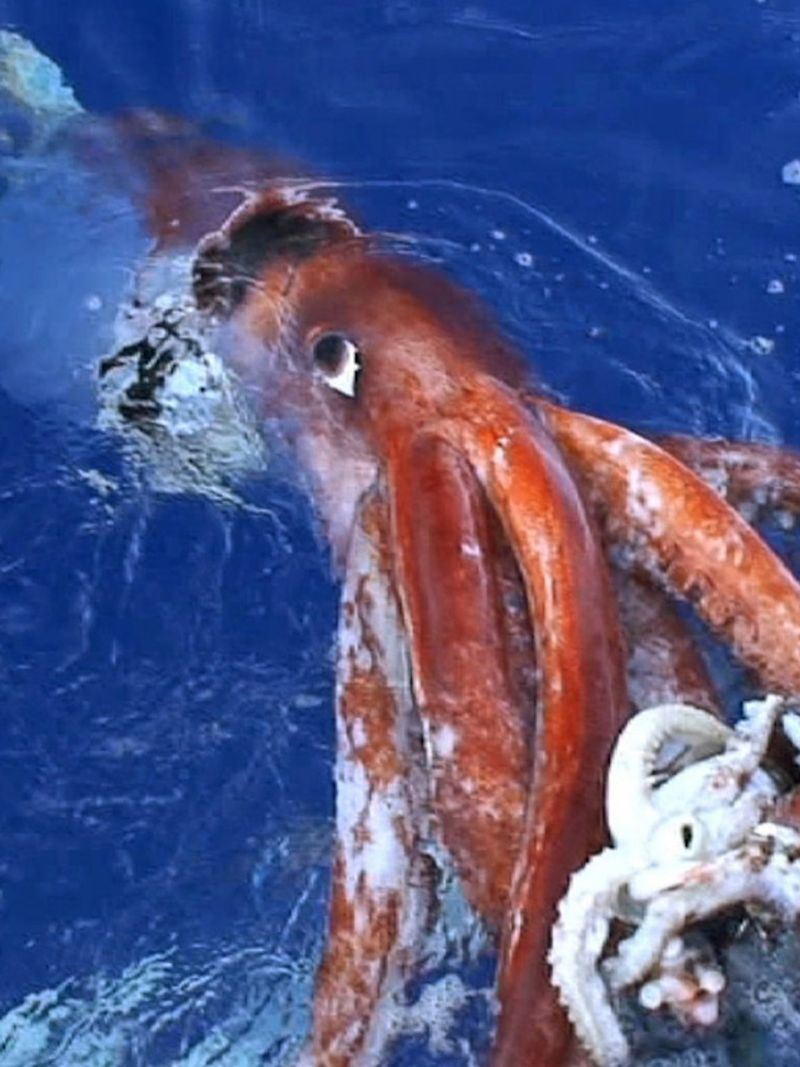
Dwelling in the ocean’s depths, the giant squid is a creature of legend and awe. With eyes the size of dinner plates, it navigates the deep sea with precision.
Its powerful tentacles are equipped with suction cups lined with sharp hooks, making it a formidable predator of the abyss.
Rarely seen by humans, this elusive giant sparks intrigue and fear. The giant squid reminds us of the vast, unexplored wonders lurking in the ocean’s inky depths, a true leviathan of the deep.
13. Bobbit Worm
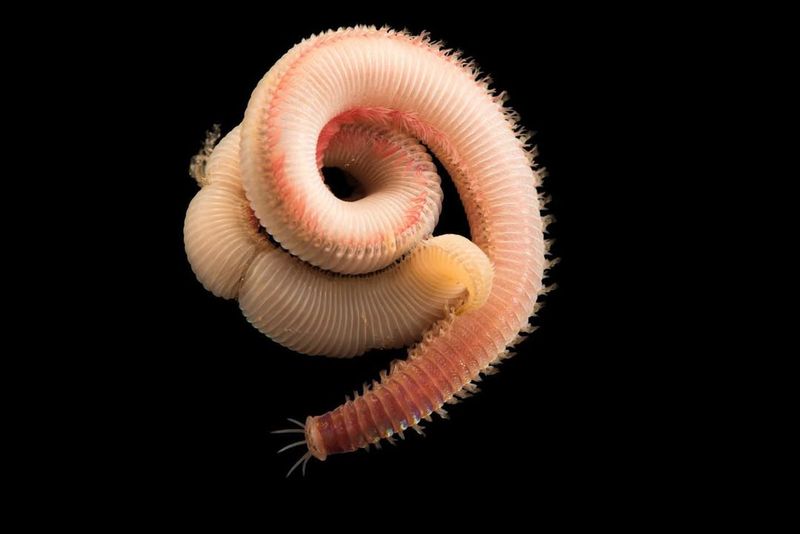
Lurking beneath the ocean floor, the Bobbit Worm is a predator that strikes fear in the hearts of its prey.
With lightning speed, it snaps its jaws shut on unsuspecting fish. This worm can grow up to ten feet long and is known for its vibrant, iridescent colors.
Its hunting technique involves waiting patiently, buried in the sand, until a fish swims too close. With a swift motion, it drags its prey underground.
The Bobbit Worm’s presence is a reminder of the ocean’s hidden dangers. Always be aware of your surroundings while swimming in sandy areas.
14. Sea Snakes
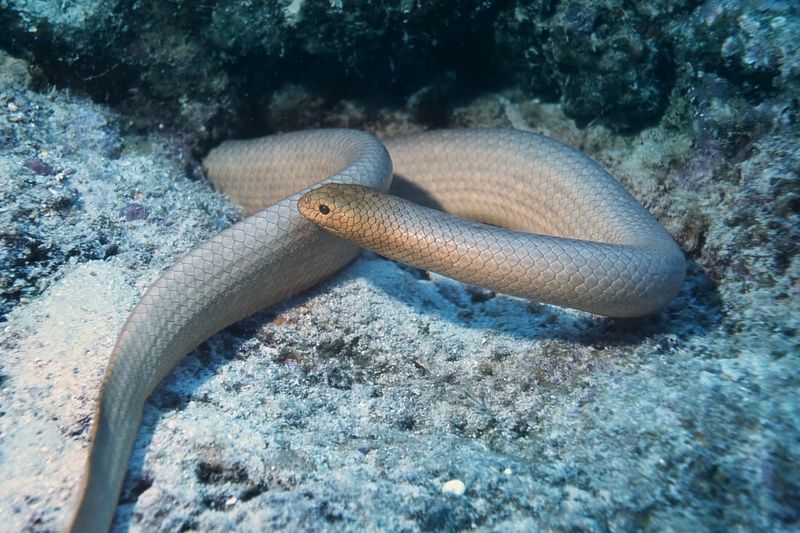
Gliding gracefully through tropical waters, sea snakes are among the most venomous reptiles on Earth. Their potent venom can cause muscle paralysis and respiratory failure, making them formidable hunters.
Although generally shy, they can deliver a lethal bite if provoked. With a variety of striking colors and patterns, they add a vibrant touch to the marine tableau.
Their presence is a humbling reminder of the ocean’s deadly potential, a beauty best appreciated from a respectful distance.
15. Box Jellyfish
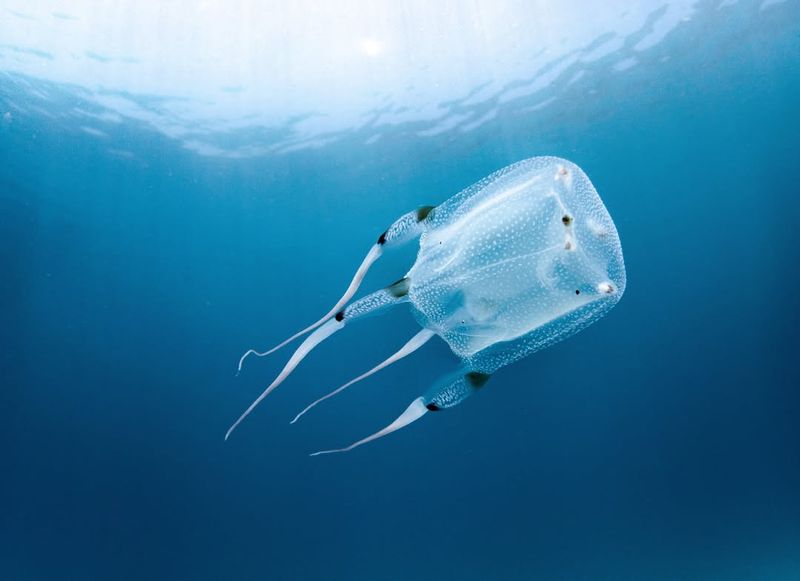
The box jellyfish is a master of stealth, drifting silently through tropical waters.
Its tentacles, lined with venomous cells, deliver a sting that can lead to excruciating pain, paralysis, and even cardiac arrest within minutes.
Found near the coasts of Northern Australia, it demands respect and caution from swimmers. Its near-invisibility in the water is a reminder of the ocean’s hidden dangers.
Observing this delicate yet deadly creature is both a privilege and a peril, requiring both awe and awareness.
16. Titan Triggerfish
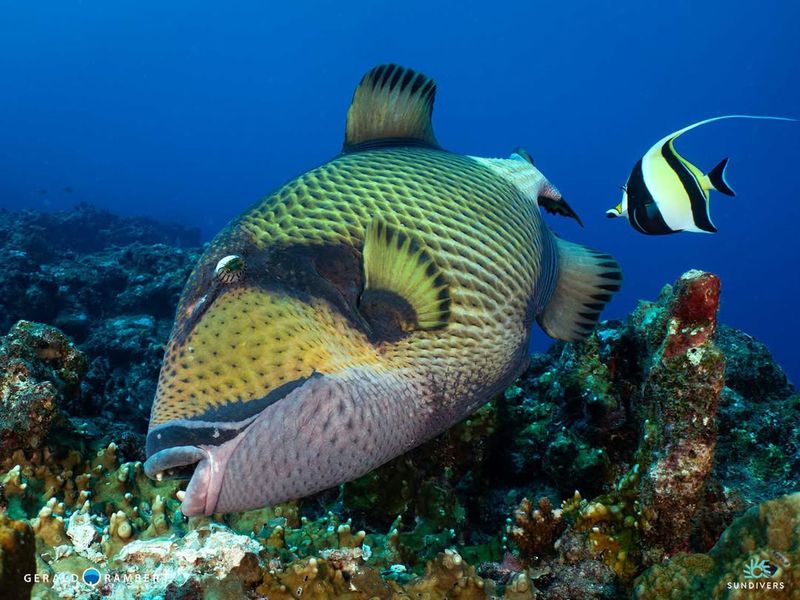
The Titan Triggerfish, often found in the coral reefs of the Indo-Pacific, is both beautiful and aggressive.
Known for its vibrant colors and large size, this fish can be a formidable opponent. With powerful jaws and sharp teeth, it can easily bite through fishing lines and even fingers.
Divers are often cautious around Titan Triggerfish during nesting season, as they fiercely guard their territory. Their defensive nature can lead to unexpected and aggressive encounters.
Despite their aggression, these fish play a vital role in maintaining the health of coral reefs. Exercise caution and respect their space when exploring their habitat.

